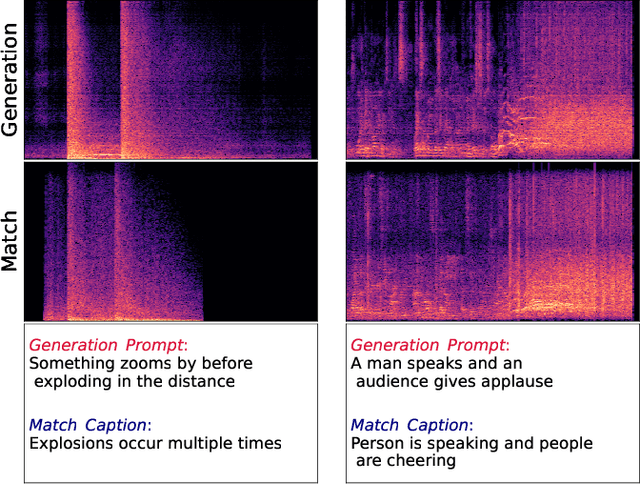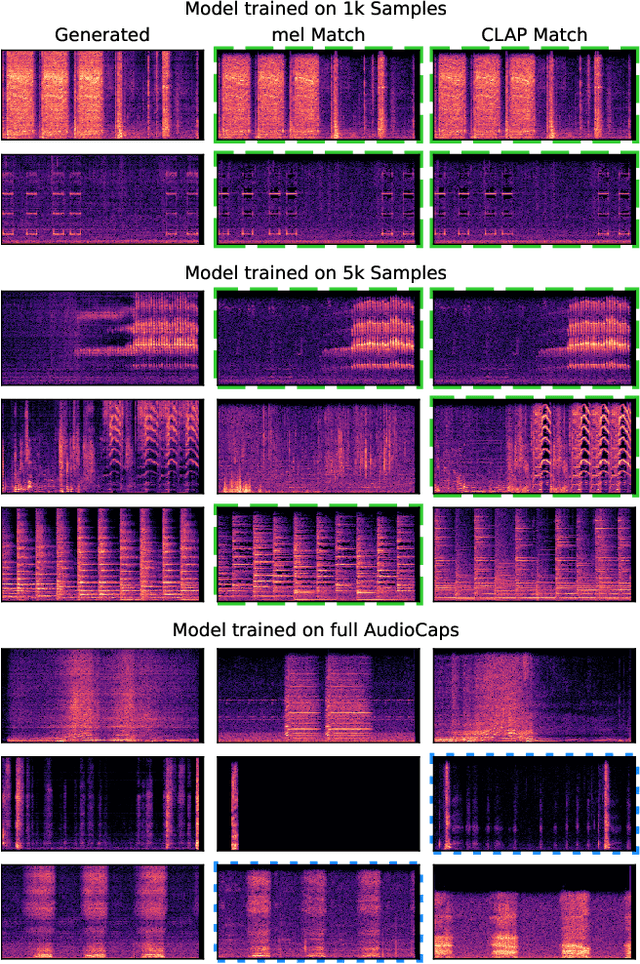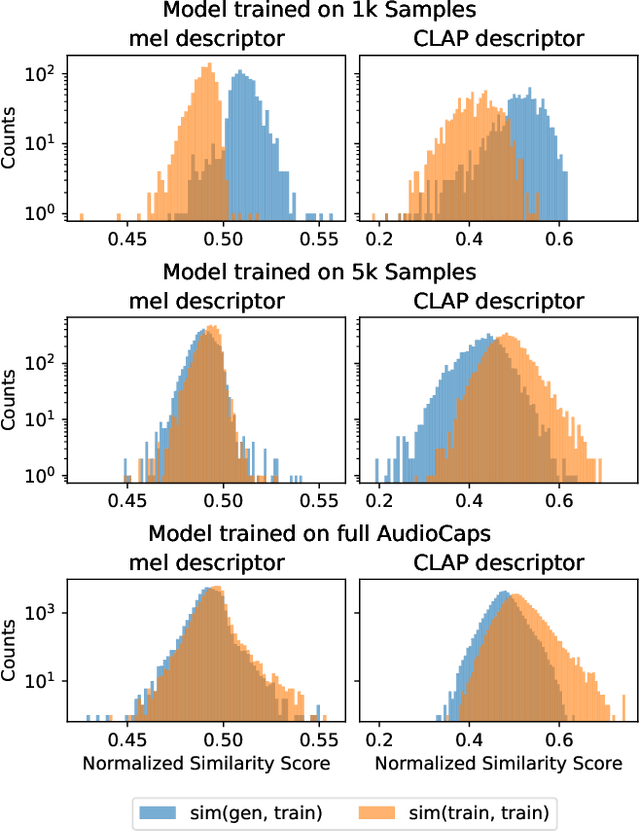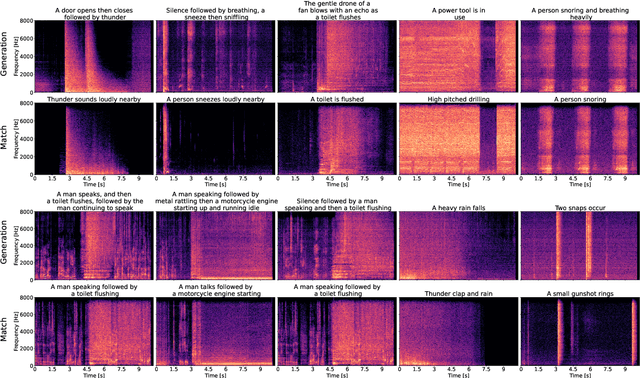Generation or Replication: Auscultating Audio Latent Diffusion Models
Paper and Code
Oct 16, 2023



The introduction of audio latent diffusion models possessing the ability to generate realistic sound clips on demand from a text description has the potential to revolutionize how we work with audio. In this work, we make an initial attempt at understanding the inner workings of audio latent diffusion models by investigating how their audio outputs compare with the training data, similar to how a doctor auscultates a patient by listening to the sounds of their organs. Using text-to-audio latent diffusion models trained on the AudioCaps dataset, we systematically analyze memorization behavior as a function of training set size. We also evaluate different retrieval metrics for evidence of training data memorization, finding the similarity between mel spectrograms to be more robust in detecting matches than learned embedding vectors. In the process of analyzing memorization in audio latent diffusion models, we also discover a large amount of duplicated audio clips within the AudioCaps database.
 Add to Chrome
Add to Chrome Add to Firefox
Add to Firefox Add to Edge
Add to Edge